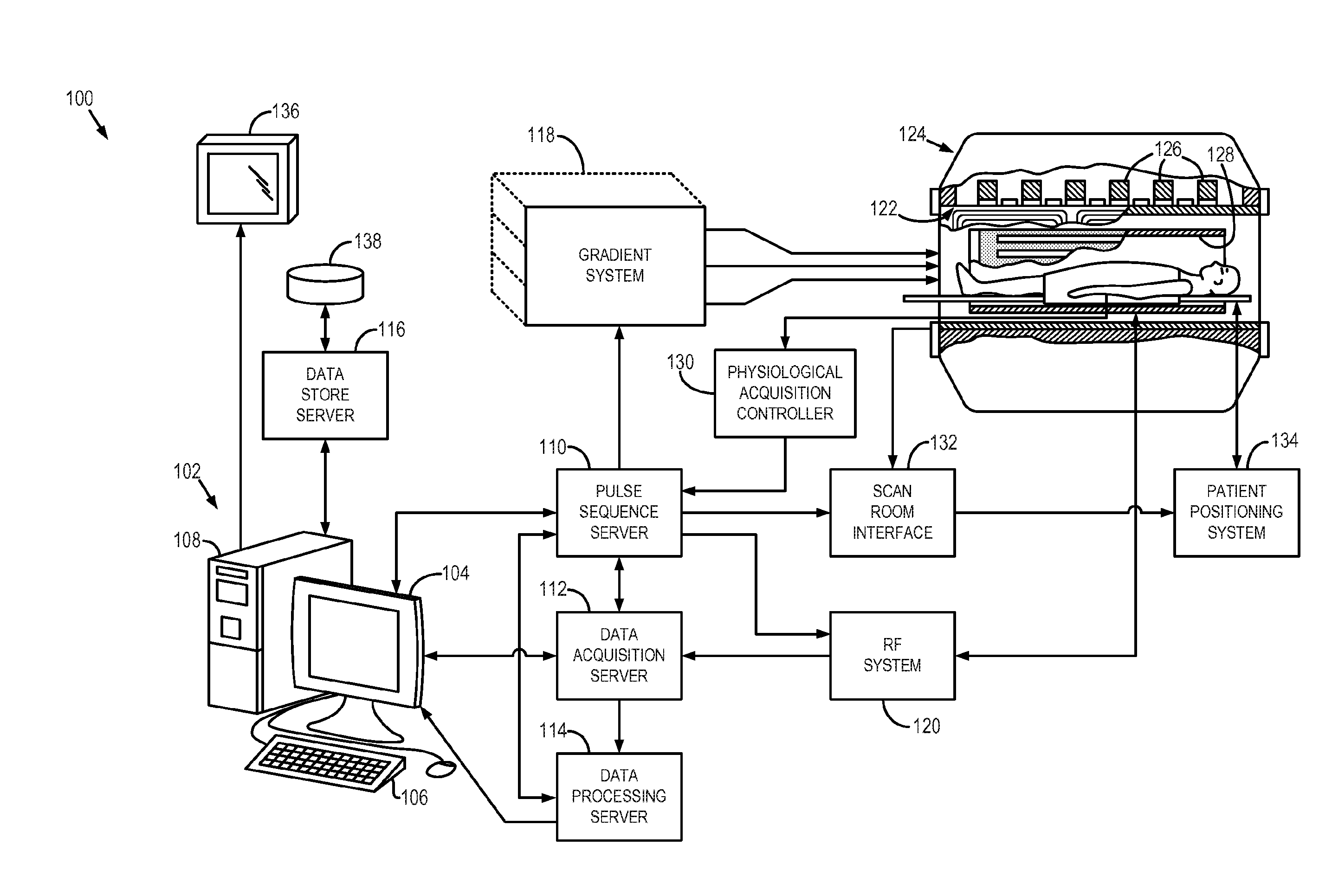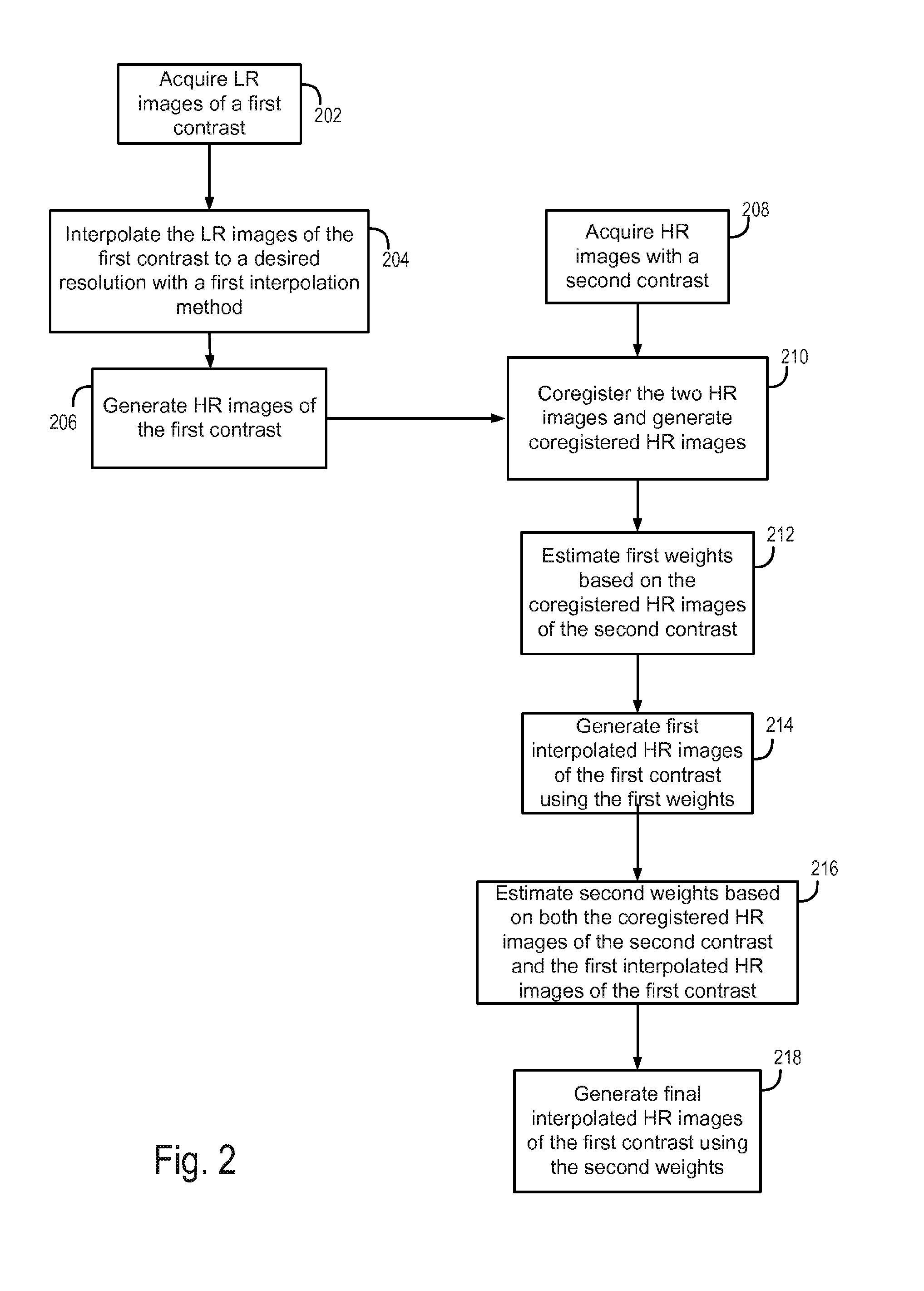System and method for generating magnetic resonance imaging (MRI) images using structures of the images
a technology of magnetic resonance imaging and image structure, applied in the field of quantitative analysis of medical images, can solve the problems of limited spatial resolution, limited image resolution, and compromise of spatial resolution, and achieve the effect of less errors and less errors
- Summary
- Abstract
- Description
- Claims
- Application Information
AI Technical Summary
Benefits of technology
Problems solved by technology
Method used
Image
Examples
Embodiment Construction
[0028]As discussed, quantitative analyses of these low resolution (LR) images are often distorted when images are transformed into a different space. For instance, voxel-wise analysis usually requires all image volumes of one subject to be aligned and analyzed in one space. Thus, if slices of different image volumes are not already acquired exactly from the same location, they need to be coregistered. Coregistration, in this case, involves guessing or interpolation. However, standard interpolation techniques are not accurate and result in distorted edges in the planes perpendicular to the acquisition plane. The reason for an inaccurate interpolation is that the neighboring voxels, from which the intensity of an unknown voxel is estimated, may not have the same tissue type as the unknown voxel. This results in an incorrect estimation of the voxel intensity using standard interpolation techniques.
[0029]As will be described, the present disclosure provides a system and method for gener...
PUM
 Login to View More
Login to View More Abstract
Description
Claims
Application Information
 Login to View More
Login to View More - R&D
- Intellectual Property
- Life Sciences
- Materials
- Tech Scout
- Unparalleled Data Quality
- Higher Quality Content
- 60% Fewer Hallucinations
Browse by: Latest US Patents, China's latest patents, Technical Efficacy Thesaurus, Application Domain, Technology Topic, Popular Technical Reports.
© 2025 PatSnap. All rights reserved.Legal|Privacy policy|Modern Slavery Act Transparency Statement|Sitemap|About US| Contact US: help@patsnap.com



